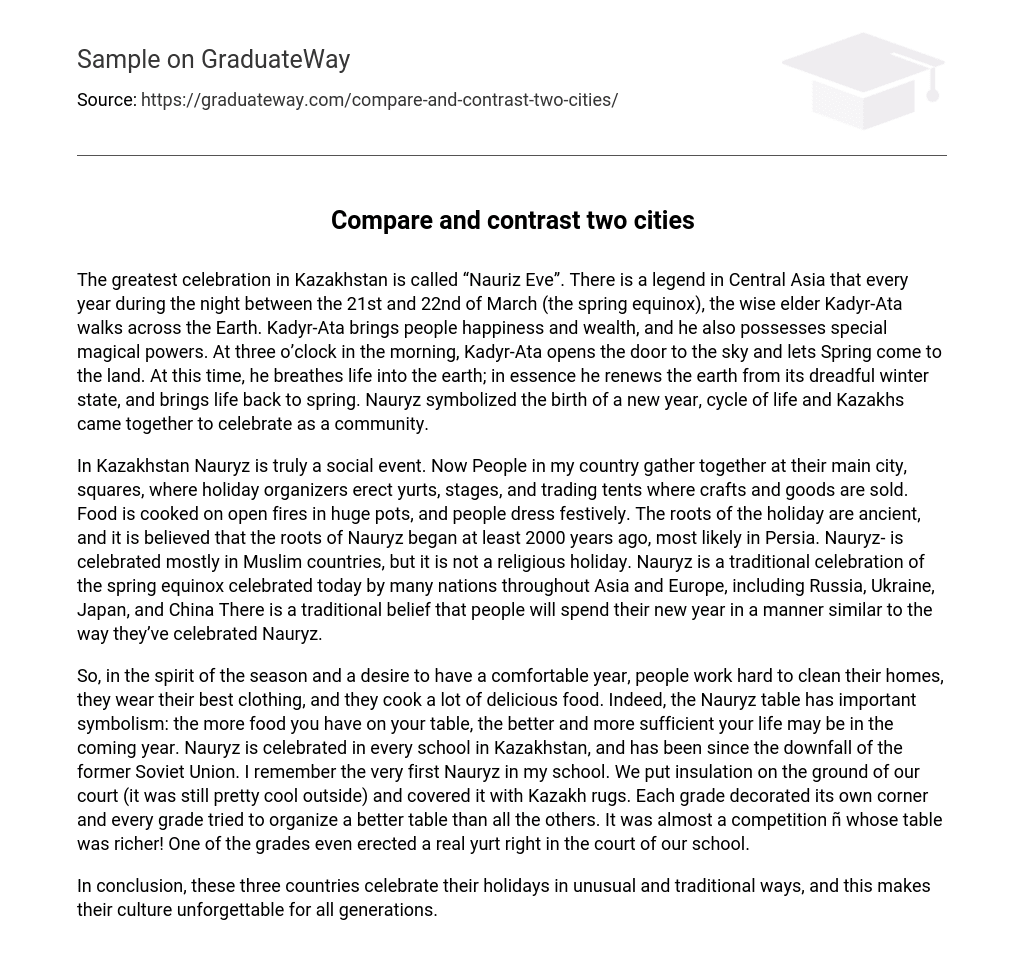The greatest celebration in Kazakhstan is called “Nauriz Eve”. There is a legend in Central Asia that every year during the night between the 21st and 22nd of March (the spring equinox), the wise elder Kadyr-Ata walks across the Earth. Kadyr-Ata brings people happiness and wealth, and he also possesses special magical powers. At three o’clock in the morning, Kadyr-Ata opens the door to the sky and lets Spring come to the land. At this time, he breathes life into the earth; in essence he renews the earth from its dreadful winter state, and brings life back to spring. Nauryz symbolized the birth of a new year, cycle of life and Kazakhs came together to celebrate as a community.
In Kazakhstan Nauryz is truly a social event. Now People in my country gather together at their main city, squares, where holiday organizers erect yurts, stages, and trading tents where crafts and goods are sold. Food is cooked on open fires in huge pots, and people dress festively. The roots of the holiday are ancient, and it is believed that the roots of Nauryz began at least 2000 years ago, most likely in Persia. Nauryz- is celebrated mostly in Muslim countries, but it is not a religious holiday. Nauryz is a traditional celebration of the spring equinox celebrated today by many nations throughout Asia and Europe, including Russia, Ukraine, Japan, and China There is a traditional belief that people will spend their new year in a manner similar to the way they’ve celebrated Nauryz.
So, in the spirit of the season and a desire to have a comfortable year, people work hard to clean their homes, they wear their best clothing, and they cook a lot of delicious food. Indeed, the Nauryz table has important symbolism: the more food you have on your table, the better and more sufficient your life may be in the coming year. Nauryz is celebrated in every school in Kazakhstan, and has been since the downfall of the former Soviet Union. I remember the very first Nauryz in my school. We put insulation on the ground of our court (it was still pretty cool outside) and covered it with Kazakh rugs. Each grade decorated its own corner and every grade tried to organize a better table than all the others. It was almost a competition ñ whose table was richer! One of the grades even erected a real yurt right in the court of our school.
In conclusion, these three countries celebrate their holidays in unusual and traditional ways, and this makes their culture unforgettable for all generations.





